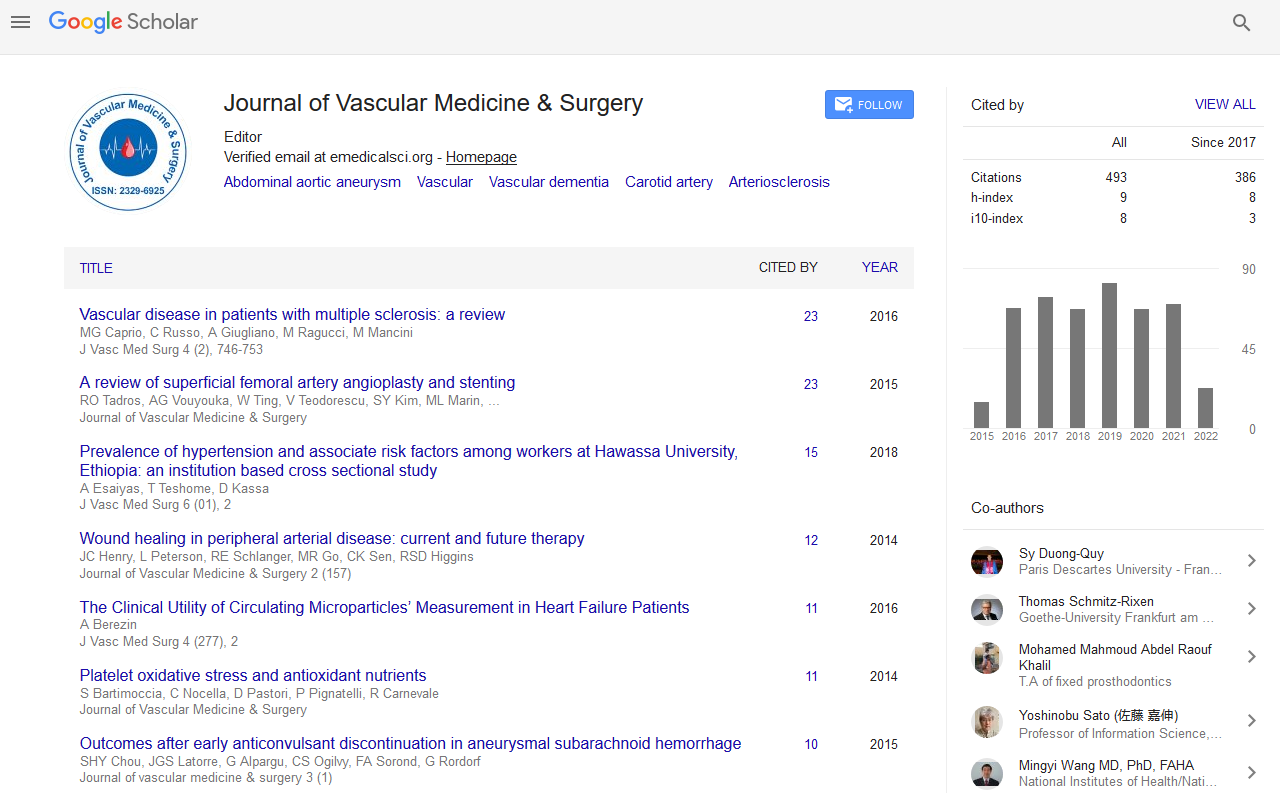Indexed In
- Open J Gate
- Academic Keys
- RefSeek
- Hamdard University
- EBSCO A-Z
- OCLC- WorldCat
- Publons
- Euro Pub
- Google Scholar
Useful Links
Share This Page
Journal Flyer

Open Access Journals
- Agri and Aquaculture
- Biochemistry
- Bioinformatics & Systems Biology
- Business & Management
- Chemistry
- Clinical Sciences
- Engineering
- Food & Nutrition
- General Science
- Genetics & Molecular Biology
- Immunology & Microbiology
- Medical Sciences
- Neuroscience & Psychology
- Nursing & Health Care
- Pharmaceutical Sciences
Abstract
The Impact of Preserving Pelvic Perfusion Using Iliac Branch Devices on Quality of Life
Chinai N, Papworth E, Balasubramaniam K, Coulston JE, Eyers PS, Ward T, Stewart AHR and Hunter ID
Background: Aorto-iliac aneurysms with extensive iliac involvement compromise distal seal during endovascular repair. Sacrificing internal iliac artery, with embolization, and therefore pelvic perfusion to create an adequate distal landing zone is associated with significant morbidity. The aim of this study was to compare patient related outcomes and quality of life between preserving pelvic perfusion with iliac branch devices and embolization.
Methods: Patients undergoing elective infrarenal EVAR with internal iliac adjunct over a 4-year period were identified from prospective local and national databases. Case notes and procedural images were reviewed. Patients were contacted by telephone to assess post-operative symptoms and impact on quality of life using validated questionnaires.
Results: 12 patients had iliac branch devices (IBD) implanted and 16 patient’s internal iliac artery embolization. IBD technical success rate was 92% with 100% patency rate at median follow-up of 12 months. Higher morbidity was associated with loss of pelvic perfusion and patients reported poorer quality of life. 4 patients developed new erectile dysfunction in the embolization group (0 IBD; p=0.06). New ipsilateral buttock claudication developed in 1 patient with preserved IIA perfusion by IBD and 8 with occluded IIA (p=0.03).
Conclusions: Routine embolization of IIA to treat aortoiliac aneurysms results in significant morbidity and reduces patient reported quality of life. Preservation of pelvic perfusion with successful IBD implantation may reduce postoperative ipsilateral buttock claudication and thus have a positive impact on quality of life. Larger prospective patient reported outcome measure studies after endovascular aneurysm repair are required alongside safety and efficacy trials.


